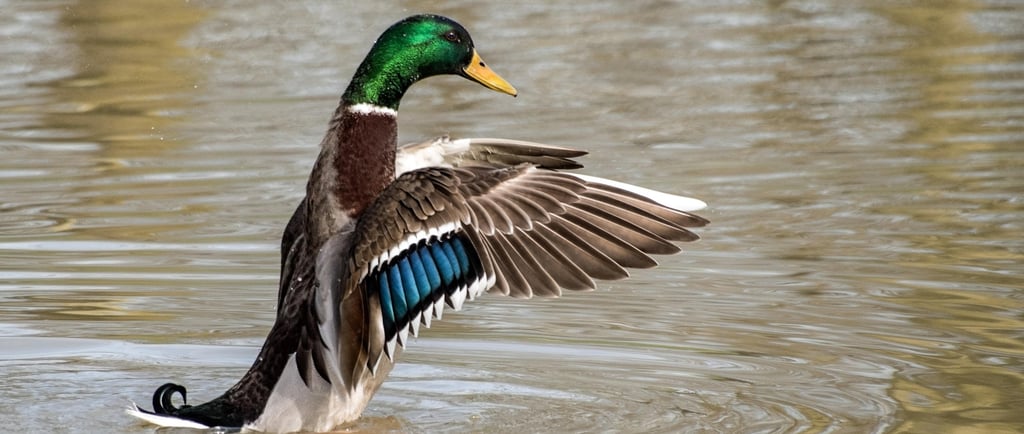💃 The Dancer on the Pond 🦆 The Mallard 🌊
🦆 A follow-up story that connects the Zoology and Ecology chapters in the Biology Album. 🌊🌿 It invites children to step into the quiet world of freshwater habitats and observe the elegant mallard—one of nature’s most familiar and fascinating water birds. Through its webbed feet, waterproof feathers, migration patterns, and feeding habits, this story gently unfolds how adaptations serve specific functions in an animal’s survival. 🪶✨ It branches from the foundational study of external characteristics in Zoology, connecting with Ecology’s deeper questions: “Why is mallard important part of the pond ecosystem?” and "What happens if part of the food web disappears?" 🧭 This story opens the door to further observation of wetland habitats, food chains, bird behaviors, and seasonal changes—inviting children to wonder what else lives, moves, and migrates just beyond the pond’s surface. 🌍🦢👀
BIOLOGY STORIES
4/4/20253 min read


If you sit quietly by a pond and listen… what would you hear? 🎧🌿 Buzzing… croaking… rustling in the reeds… a soft splash. 🐸🪰🌾💦 The pond is alive. Hidden in the grasses, gliding through the water, or buzzing above it—so many creatures call this place home.
Some are small and quiet, like the water flea hiding beneath a lily pad. 🪷 Others, like the dragonfly, zoom past with a flash of wings. But one visitor glides in with grace and style—her feathers glistening in the sun, her movements gentle like a dance on water. ✨🦆 Can you guess who?
That’s the mallard 👏 Mal 👏 lard 👏—one of the most familiar ducks in the world, yet full of secrets and surprises waiting to be discovered. They can be spotted everywhere—gliding through lakes, ponds, rivers, canals… even splashing in city parks! 🏞️ And once you’ve spotted one, look a little closer… 🧐
Not all mallards look the same!
First, you’ll notice the male mallard—he’s the one wearing the fancy outfit. His head shines like a green jewel 💚, his chest is chocolate brown 🍫, and his tail has curled feathers like a moustache! The female may look plainer in her speckled brown cloak, but her feathers are perfect for camouflage, helping her hide while she protects her eggs and chicks. 🥚🌿
Have you ever watched a duck float? It seems so effortless—like a feather on water. But below the surface, her feet are busy paddling in a silent rhythm. 🩰🦶 Mallards have webbed feet, like little fans, that help them push against the water with power and grace. 🌊
Their feathers are waterproof too!🪶💧 Ducks have a tiny waterproof secret near their tails, a small gland. This clever gland makes oil, and each day the duck uses its beak to spread that oil all over its feathers. Every day, they preen and spread this oil over their feathers, turning their coats into tiny raincoats. ☔💦 That’s why water rolls right off them!
And have you noticed how their heads go under water but their tails stick up like little sails? 🚩 That’s called dabbling—mallards tip forward to reach underwater plants, bugs, and seeds. They’re not deep divers like some other birds living in the pond—they like the buffet right near the surface. 🥗🌿🐛
And then there’s that quack! But guess what? Only the females quack loudly! Males make softer whistles and raspy calls. 🗣️🦆 So next time you hear a loud QUACK!—you’re hearing a mama duck talking.
In spring, if you’re lucky, you might see a line of fuzzy ducklings following their mother like little feathery marbles with legs. 🐣🐣🐣 They stay close, learning to dabble, dive, and preen. Mallard ducklings can swim just hours after hatching—and they’re already pretty good at keeping up!
🧭 When the days grow shorter and the air turns cold, some ducks take to the sky in V-formation, flying hundreds or even thousands of kilometers to warmer places. ✈️Their wings beat fast—up to 800 times per minute! Their strong muscles and hollow bones make them light and powerful flyers. ✨🪶
Just like the mallard, every creature in the pond has a special role—some are hidden under the water, some dance on the surface, and others visit only for a snack or a season. 🐸🪰🐟🌿 The mallard is just one part of this delicate, interconnected world.
🪶 I wonder… Who else shares this watery home? Who’s hunting the dragonfly? 🧐 What does the heron wait for, standing so still like a grey statue in the reeds? 🪶👀 Above the pond, a kingfisher might flash like a blue lightning bolt, diving for minnows. 💙⚡ A coot might paddle by, its white beak shining in the sun. And far off, you might hear the call of a grebe or spot a moorhen weaving a nest of twigs near the bank. 🐦🏞️ Each one has its part to play in the pond’s story, which one you would like to research more about next?
With Montessori joy,
Vanina 😊

